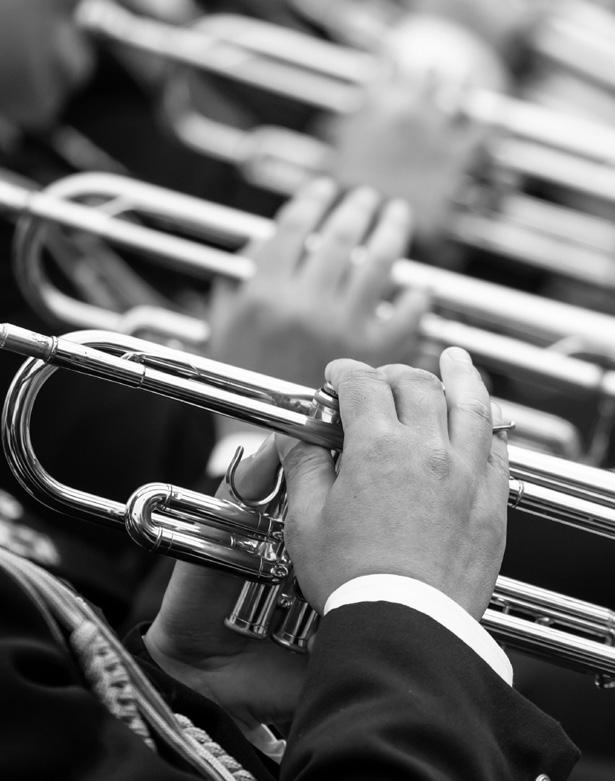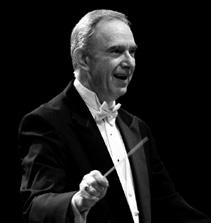N B A 6 0 TH A N N I V E R S A R Y C O M M I S S I O N
AN OVERVIEW OF JAMES M. DAVID’S URBAN LIGHT
U
BY SCOTT TOBIAS
rban Light by James M. David was commissioned by the National Band Association in honor of the 60th anniversary of the founding of the organization. The work received its premiere at the 2021 Midwest Clinic by the United States Army Field Band. According to the composer, “Urban Light is a brilliant display of colors, forward momentum, and intertwining rhythmic layers that is inspired by the iconic Los Angeles landmark of the same name.”
rock/metal influence that reaches its zenith with a heavy percussion backbeat.” An expansive percussion section is also employed requiring six players to cover the parts. In addition to standard instruments such as snare drum, bass drum, bells and vibraphone, the work calls for a variety of cymbals (ride, China, suspended, crash, hi-hat) and tamtams. Other instruments include timbales, slapstick, brake drum, ice bell, crotales, triangles, floor tom, chimes, bongos, woodblock, and tambourine.
At just under six minutes in length, the work makes for an exciting opener to a concert program. A standard wind band instrumentation is used with optional parts for contrabassoon, contrabass clarinet, and double bass. All three clarinet parts are written divisi at times requiring at least six players, and although four horn parts are written, the collective section never plays more than three separate parts at any time other than in the first measure. Additionally, straight mutes are required for trumpets, horns, and trombones. Parts for piano and electric guitar are listed as “optional, but strongly recommended.” The addition of the electric guitar timbre to the ensemble greatly enhances the effect created by the use of barre chords in the work which the composer says, “reveal a classic
The work is centered around the key of G major, although the composer opts for the use of accidentals in place of a traditional key signature. All parts fall within ranges that should be comfortable for strong high school players. For example, flutes remain below G6, clarinets remain below Eb6, and the highest note for trumpet is B5 (which only occurs twice). In terms of technical demands, the greatest challenges within the piece are related to rhythm and meter. Layered patterns are presented which require a strong sense of pulse and confident independence from the players. As an example, measure 29 features straight eighth notes and sixteenth notes in the percussion section with a syncopated pattern in the brass. On top of this is a clarinet part which is written in
Scott C. Tobias currently holds the position of Director of Bands and Associate Professor of Music at West Virginia University where his responsibilities include conducting the WVU Wind Symphony, teaching undergraduate and graduate courses in conducting, and providing administrative leadership for the WVU Bands program. Prior to his appointment at West Virginia University, Dr. Tobias served on the faculties of the University of Central Florida and Appalachian State University. A native of South Carolina, Dr. Tobias earned the Bachelor of Music degree in Music Education from Furman University, the Master of Music Education degree from the University of Georgia, and the Doctor of Musical Arts degree in Conducting from the University of Georgia. Dr. Tobias presently serves as Immediate Past President of the National Band Association and Past President of the Big 12 Band Directors Association.
a grouping that feels very much like 3 + 3 + 2 in 8/8 while at the same time the accents in the flute part create a 3 + 2 + 3 grouping. The combination of these parts creates an exciting groove which drives the piece forward; however, that groove is dependent on the accurate interlocking of the various rhythmic patterns. Other sections of the piece feature similar layering effects but through the use of duple and triple subdivisions. In measure Continued on next page
34
NBA JOURNAL






















